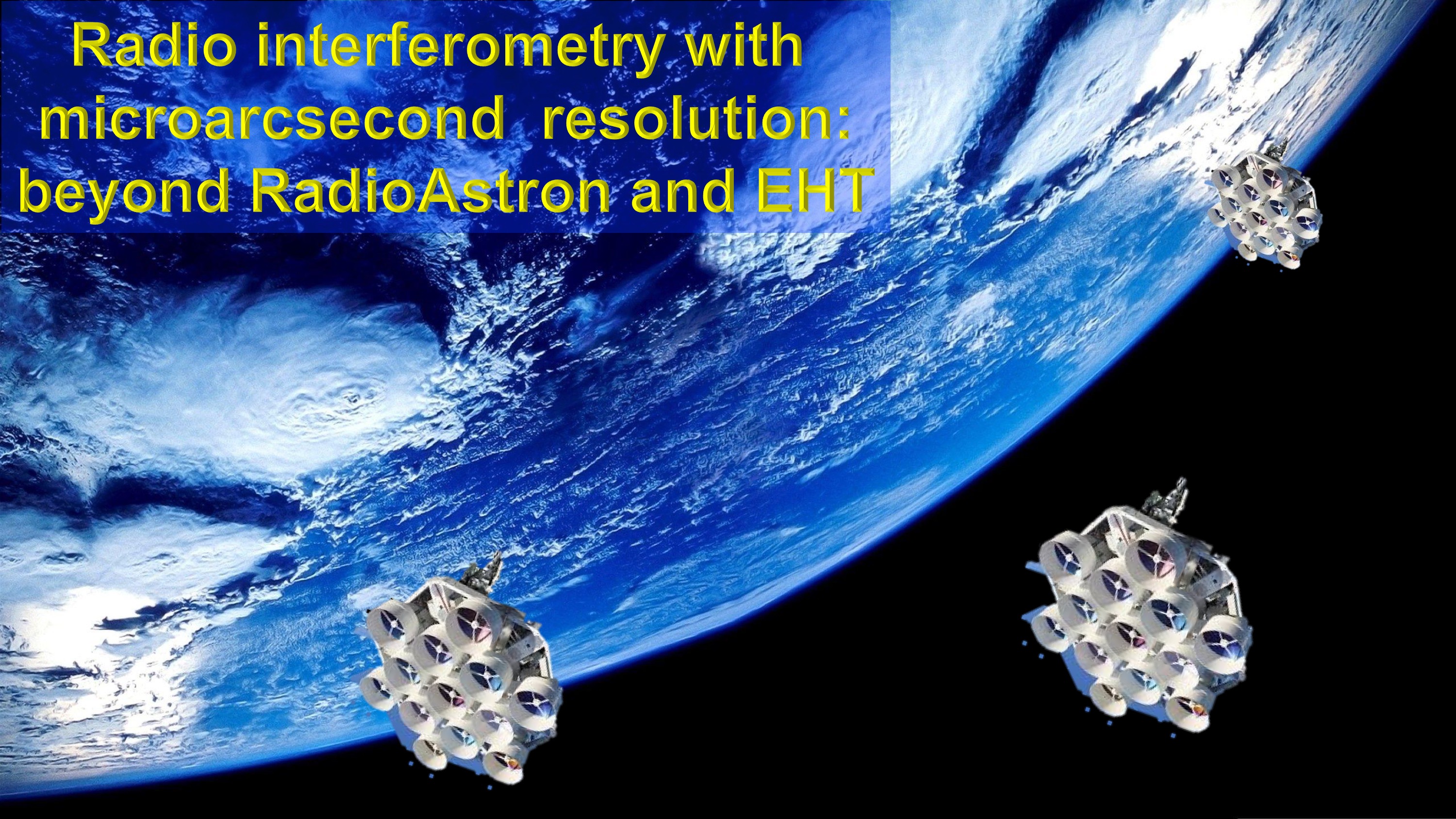Daily Image
30-09-2021Radio interferometry with microarcsecond resolution: beyond RadioAstron and EHT
| Submitter: | Leonid Gurvits (JIVE, Delft University of Technology) |
| Description: | Ultra-high angular resolution in astronomy has always been an important vehicle for making fundamental discoveries. Recent results in direct imaging of the vicinity of the super-massive black hole in the nucleus of the radio galaxy M87 by the millimeter VLBI system Event Horizon Telescope and various pioneering results of the Space VLBI mission RadioAstron provided new momentum in high angular resolution astrophysics. In both mentioned cases, the angular resolution reached the values of about 10-20 microarcseconds (0.05-0.1 nanoradian). In the case of Earth-based EHT, the highest angular resolution was achieved by combining the shortest possible wavelength of 1.3 mm with the longest possible baselines, comparable to the Earth's diameter. For RadioAstron, operational wavelengths were in the range from 92 cm down to 1.3 cm, but the baselines were as long as ~350,000 km. However, these two highlights of radio astronomy, EHT and RadioAstron do not 'saturate' the interest to further sharpening of astronomy studies. Quite opposite: the science case for further increase in angular resolution in astrophysics becomes even stronger. A natural and, in fact, the only possible way of moving forward is to enhance mm/sub-mm VLBI by extending baselines to extraterrestrial dimensions, i.e. creating a mm/sub-mm Space VLBI system. The inevitable move toward space-borne mm/sub-mm VLBI is a subject of several concept studies. In this presentation I will focus on one of them, called TeraHertz Exploration and Zooming-in for Astrophysics (THEZA). It is prepared in response to the ESA’s call for its next major science program Voyage 2050 (Gurvits et al. 2021, ExpA). The THEZA rationale is focused on the physics of spacetime in the vicinity of super-massive black holes as the leading science driver. However, it will also open up a sizable new range of hitherto unreachable parameters of observational radio astrophysics and create a multi-disciplinary scientific facility and offer a high degree of synergy with prospective 'single dish' space-borne sub-mm astronomy and infrared interferometry. As an amalgam of several major trends of modern observational astrophysics, THEZA aims at facilitating a breakthrough in high-resolution high image quality astronomical studies. Several technology challenges facing the THEZA concept and possible ways of their resolutions will be discussed. |
| Copyright: | Image credit: Leonid Gurvits |
| Tweet |  |
